|
|
Carl Philipp Emanuel Bach (Composer, Bach's Pupil) |
|
Born: March 8, 1714 - Weimar, Thuringia, Germany
Died: December 14, 1788 - Hamburg, Germany |
|
Carl Philipp Emanuel Bach [= C.P.E. Bach, CPE Bach, CPEB] was a German musician and composer, the second son of J.S. Bach and Maria Barbara Bach. He was a founder of the Classical style.
When he was ten years old C.P.E. Bach entered the Thomasschule in Leipzig, of which in 1723 his father had become Kantor, and continued his education as a student of jurisprudence at the Universities of Leipzig (1731) and of Frankfurt an der Oder (1735). In 1738 he took his degree, but at once abandoned all prospects of a legal career and determined to devote himself to music.
A few months later C.P.E. Bach obtained an appointment in the service of the crown prince of Prussia, on whose accession in 1740 he became a member of the royal household. He was by this time one of the foremost clavier-players in Europe, and his compositions, which date from 1731, included about thirty sonatas and concert pieces for his favourite instrument. His reputation was established by the two sets of sonatas which he dedicated respectively to Frederick the Great and to the grand duke of Württemberg; in 1746 he was promoted to the post of chamber musician, and for 22 years shared with Carl Heinrich Graun, Johann Joachim Quantz, and Johann Gottlieb Naumann the continued favour of the king.
During his residence at Berlin, C.P.E. Bach wrote a fine setting of the Magnificat, in which he shows more traces than usual of his father's influence; an Easter cantata; several symphonies and concerted works; at least three volumes of songs; and a few secular cantatas and other occasional pieces. But his main work was concentrated on the clavier, for which he composed, at this time, nearly two hundred sonatas and other solos, including the set Mit veränderten Reprisen (1760-1768) and a few of those für Kenner und Liebhaber. Meanwhile he placed himself in the forefront of European critics by his Versuch über die wahre Art das Clavier zu spielen, a systematic and masterly treatise which by 1780 had reached its third edition, and which laid the foundation for the methods of Muzio Clementi and Cramer.
In 1768 C.P.E. Bach succeeded Georg Philipp Telemann as Capellmeister at Hamburg, and in consequence of his new office began to turn his attention more towards church music. Next year he produced his oratorio Die Israeliten in der Wüste, a composition remarkable not only for its great beauty but for the resemblance of its plan to that Felix Mendelssohn's Elijah, and between 1769 and 1788 added over twenty settings of the Passion, and some seventy cantatas, litanies, motets, and other liturgical pieces. At the same time, his genius for instrumental composition was further stimulated by the career of Joseph Haydn.
Through the latter half of the 18th century, the reputation of C.P.E. Bach stood very high. W.A. Mozart said of him, "He is the father, we are the children." The best part of Haydn's training was derived from a study of his work. L.v. Beethoven expressed for his genius the most cordial admiration and regard. This position he owes mainly to his clavier sonatas, which mark an important epoch in the history of musical form. Lucid in style, delicate and tender in expression, they are even more notable for the freedom and variety of their structural design; they break away altogether from the exact formal antithesis which, with the composers of the Italian school, had hardened into a convention, and substitute the wider and more flexible outline which the great Viennese masters showed to be capable of almost infinite development.
The content of C.P.E. Bach's work, though full of invention, lies within a somewhat narrow emotional range, but it is not less sincere in thought than polished and felicitous in phrase. Again he was probably the first composer of eminence who made free use of harmonic colour for its own sake since the time of Lassus, Monteverdi, and Gesualdo, and in this way also he takes rank among the most important pioneers of the First Viennese School. His name fell into some neglect during the 19th century, with Robert Schumann notoriously opining that "as a creative musician he remained very far behind his father"; in contrast, Johannes Brahms held Emanuel Bach in high regard and edited some of his music. Today, no student of music can afford to disregard Emanuel's Sonaten für Kenner und Liebhaber, his oratorios Die Israeliten in der Wüste and Die Auferstehung und Himmelfahrt Jesu, and several harpsichord concertos such as those in G major (Wq. 3) and D major (Wq. 11). Also, his Flute Concerto in D Minor (Wq. 22), due to its unparalleled mellifluous opening movement, has been performed by the greatest flautists world-wide, including Jean-Pierre Rampal.
A list and critical account of his voluminous compositions may be found in the New Grove Dictionary of Music and Musicians (1980). |
|
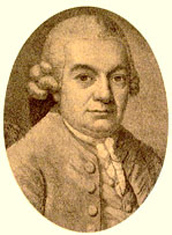
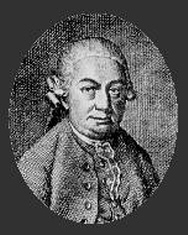 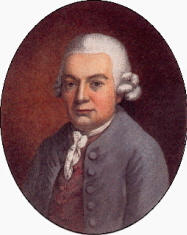
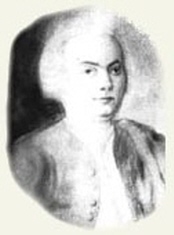 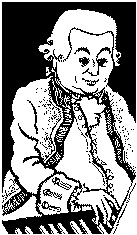
|
|
Source: Wikipedia Website (from 1911 Encyclopædia Britannica)
Contributed by Aryeh Oron (December 2005) |
|
Carl Philipp Emanuel Bach : Short Biography | Bach-inspired Keyboard Works: Works | Recordings | Other Arrangements/Transcriptions: Works | Recordings |
|
Bach Family : Sorted by Name | Sorted by Number | Family Tree | Family History | Discussions: Part 1 | Part 2 | Part 3 |
|
Bach's Pupils : List of Bach's Pupils | Actual and Potential Non-Thomaner Singers and Players who participated in Bach’s Figural Music in Leipzig | Bach’s Pupils - Discussions: Part 1 | Part 2 |
|
Works previously attributed to J.S. Bach |
|
Cantata Reißt euch los, bekränkte Sinnen, BWV 224 (1732) (or J.S. Bach)
Concerto for organ No. 6 in E flat major (after unknown source), BWV 597 (arranged by C.P.E. Bach?)
Chorale Prelude for organ Aus der Tiefe rufe ich, BWV 745
Sonata for flute (or violin) & keyboard in G minor, BWV 1020
Sonata for 2 violins & harpsichord in D minor, BWV 1036
Fugue for organ in B minor, BWV Anh 43, H 776/18
Chorale Prelude for otgan Ich ruf zu dir, Herr Jesu Christ, BWV Anh 73 (Variant of BWV 639)
Fugue for keyboard in C major, BWV Anh 90, H 388
Fugue for keyboard in D major, BWV Anh 96, H 373.5
Fugue for keyboard in D minor, BWV Anh 98, H 373.5
Fugue for keyboard in D minor, BWV Anh 100, H 373.5
Fugue for keyboard in C major on B-A-C-H, BWV Anh 108, H 373 (or Georg Andreas Sorge)
March for keyboard in D major, BWV Anh 122 [AMN II/16], H 1
Polonaise for keyboard in G minor, BWV Anh 123 [AMN II/17], H 1
March for keyboard in G major, BWV Anh 124 [AMN II/18], H 1
Polfor keyboard in G minor, BWV Anh 125 [AMN II/19], H 1
Sonata for keyboard in E flat major (Solo per il Cembalo), BWV Anh 129 [AMN II/27], H 16
Sonata for 2 violins & bc in D major, BWV Anh 185, H 585 (vgl. Wq 74 & H 507)
Sonata for 2 violins & bc in F major, BWV Anh 186, Wq 154; H 576
Trio for bass flute, bassoon & violin in F major, BWV Anh 187, Wq 159; H 587
Concerto for keyboard, strings & bc in A minor, BWV Anh 189, Wq 1; H 403 |
|
Arrangements of J.S. Bach's Works |
|
Cantata Freue dich, erlöste Schar, BWV 30 (June 24, 1738 or a year or two later)
Bach’s autograph title page for the score does not list trumpets and timpani. Someone, probably C.P.E. Bach, later added in parentheses “concordant e se piace a 3 Trombe e Tamburi”. The original set of parts does not include the parts for trumpets and timpani; however, the 3 parts for Clarino 1, Clarino 2, and Timpani (for mvts. 1 & 12) in W.F. Bach’s handwriting were added later (probably for a performance of this work in Halle). Later C.P E. Bach came into possession of the score and parts and it was listed in his estate at the time of his death (1790). |
|
Works performed by J.S. Bach |
|
Concerto for Harpsichord in A minor, H 403 - performed by J.S. Bach & Collegium Musicum in Leipzig, c1746 |
|
Use of Chorale Melodies in his works |
|
Title |
Chorale Melody |
Year |
|
Ich bin ja Herr in deiner Macht , chorale setting for organ (or keyboard), H. 336/2 |
Ich bin ja, Herr, in deiner Macht |
Before 1789 |
|
O Gott du frommer Gott , Chorale setting for organ (or Keyboard), H. 336/1 |
O Gott, du frommer Gott |
|
|
|